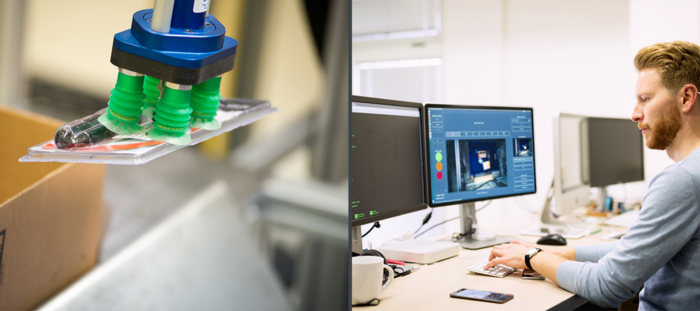“The only thing that is constant is change.” -Heraclitus
Robotics has reached an impasse. Today’s automation technologies excel at dealing with the so-called three D’s of work: Dirty, Dangerous, and Dull. But successful deployment also relies on one R: Repeatability. Robots are traditionally best utilized in controlled, fairly predictable environments.
A lot of effort is going into changing this situation. Novel sensors grant robots a deeper sense of what is going on around them, so they can detect variation. And new control algorithms enable systems to react rapidly, while improved actuators and feedback signals let robots operate safely in wider circumstances, including near humans.
Machine learning (ML) is another factor expanding the reach of automation. Even with great sensors, skillful planning and control, and improved actuators, a truly autonomous robot still must decide how to react to change. It is impossible to hardcode, in advance, what all of those reactions should be. But by enabling a robot to learn from its interaction with the environment, including the humans around it, we can unlock the infinite adaptability necessary.
We’re not there yet. Despite great advances in recent years, and the sometimes unbelievable results of recent improvements in ML techniques, robots still make mistakes. But they can get better, with our help.
My work in the application of machine learning to human-robot interaction focuses on humans and robots interactively helping each other improve system performance, or human-robot tutelage. In contrast to batch learning techniques–where data is gathered, augmented, annotated and processed to create a fixed expert system that is released into production — tutelage is a paradigm that allows for real-time, incremental improvement via bi-directional communication between robots and humans.

The crux of this approach is giving a robot a sense of confidence in its abilities, then letting it use that confidence to determine when to ask for help — something along the lines of, “Does this look right?” or “What should I do now?” A human provides a response, and the robot continues. When the robot next sees a similar situation, it is more confident in what it should do. Confident enough, perhaps, that it doesn’t need to ask a human.
Tutelage works well for tasks where the robot can pause, communicate with a human, and then resume task execution. Real-time control of an autonomous car doing 85 mph on the highway is not a good candidate for this technology. But many decision-based tasks such as ‘Is this fruit good to eat?’ or ‘Where is the cat in this scene?’ or ‘Which route should I take?’ are amenable. Such tasks abound in modern manufacturing, logistics, and automation domains and are the same types of tasks that can be enhanced with Cognitive Collaboration. Human-Robot Tutelage brings learning into the mix, so that the system can autonomously adapt and improve over time.
Many companies are striving to offer fully autonomous systems that require no interaction. This is a great goal, but technology has not sufficiently progressed to achieve it today. I prefer the approach we are taking at Plus One Robotics where we ask: Why aim for 100% autonomy in the future when we can deliver 95% autonomy now and learn the rest as we go? Plus One uses Cognitive Collaboration and Tutelage to bridge the gap between the current abilities of robots and the expanding needs of our customers. The solution, called Yonder, is an interactive system connecting robots with humans to reach the goal of autonomy. Plus One is pushing through the impasse, making the future, now.
